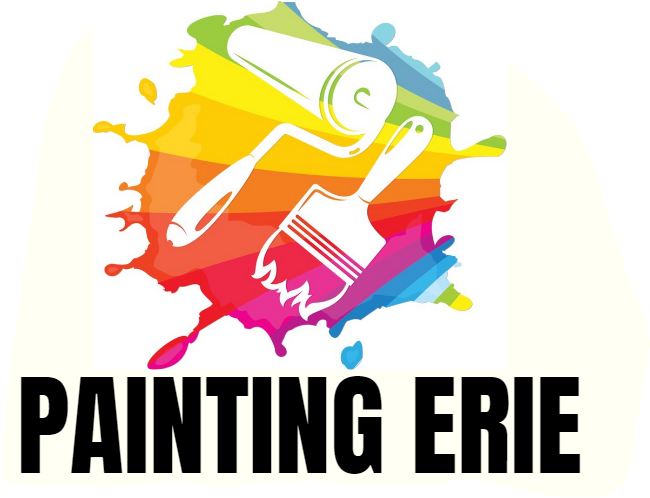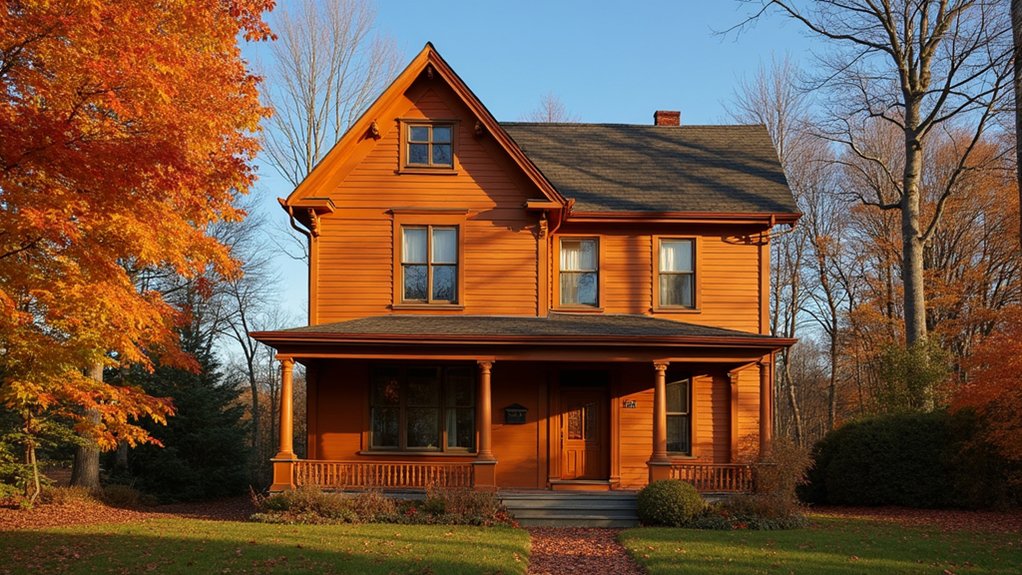As you consider repainting your home’s exterior, you might be wondering when the best time is to tackle this project in Pennsylvania. If you’re looking for favorable conditions, fall is an excellent choice. With temperatures ranging from 50°F to 90°F, you can guarantee proper paint adhesion and curing. Plus, lower humidity reduces the risk of paint bubbling and blistering. Now, let’s investigate why fall’s unique combination of weather factors makes it an ideal time for exterior painting in PA.
Moderate Temperatures for Optimal Paint Adhesion
When painting exteriors in PA, a temperature range of 50°F to 90°F (10°C to 32°C) is ideal for favorable paint adhesion. You’ll achieve the best results when the temperature falls within this range, as it allows for ideal paint curing conditions.
This moderate temperature range guarantees that the paint dries at a steady rate, forming a strong bond with the surface. You’ll also appreciate the comfortable working temperatures, which enable you to work efficiently without feeling too hot or cold.
Outside of this range, paint may dry too quickly or slowly, leading to adhesion issues or other problems. By painting within the ideal temperature range, you can certify a durable, long-lasting finish that will withstand PA’s varying weather conditions.
Additionally, fall’s moderate temperatures help exterior paint act as effective weather protection, shielding your home from the harsh elements and preventing issues like wood rot.
Lower Humidity Means Fewer Painting Challenges
As you prepare to tackle your exterior painting project in PA, consider the significant impact humidity can have on the outcome. High humidity levels can lead to paint bubbling and blistering, ruining the finish and requiring costly repairs.
Fall’s lower humidity, on the other hand, provides ideal humidity conditions for exterior painting. With minimal paint bubbling and blistering, you can achieve a smooth, even finish that will last for years to come. Additionally, lower humidity reduces the risk of moisture getting trapped beneath the paint, which can cause peeling and flaking. By choosing a professional service, you can also ensure the use of high-quality outside finishes for lasting durability and enhanced home appearance.
Reduced Risk of Weather-Related Delays
Because fall’s mild temperatures and lower humidity create a more stable outdoor environment, you’re less likely to encounter weather-related delays that can derail your exterior painting project in PA.
With fewer rain showers and less intense sunlight, you can complete your project without worrying about wash-offs or paint failures. This stability also allows for increased exterior preparation, such as power washing and scraping, which is essential for a durable paint job.
As a result, you can minimize weather-related issues and guarantee a smoother, more efficient painting process. By avoiding the unpredictability of spring and summer weather, you can focus on getting the job done right, without interruptions or setbacks.
With fall’s cooperative weather, you can confidently schedule your exterior painting project, knowing that Mother Nature is on your side.
The Importance of Proper Paint Drying and Setting
Proper paint drying and setting are crucial steps in the exterior painting process, directly impacting the final result’s longevity and look. You want to guarantee that your paint job lasts for years to come, and proper drying and setting are key to achieving that.
If you don’t allow the paint to dry and set properly, it can lead to a weak bond between the paint and the surface, resulting in peeling, flaking, or blistering. To avoid this, you need to focus on paint surface preparation, making sure the surface is clean, dry, and free of debris. Additionally, you should aim for ideal paint consistency, as this will help the paint to flow smoothly and evenly.
Enhanced Curb Appeal Before the Holiday Season
With the holiday season just around the corner, you’re likely impatient to give your home’s exterior a fresh new look that will impress family and friends. Fall is an ideal time to elevate your home’s curb appeal, making it a welcoming space for loved ones and amplifying its property value.
By repainting your home’s exterior, you can:
- Create a warm and inviting atmosphere that makes your home stand out from the crowd.
- Entice potential buyers if you’re planning to sell your home in the near future.
- Increase property value by giving your home a fresh, modern look.
- Make a lasting impression on friends and family who’ll visit during the holiday season.
A fresh coat of paint can work wonders for your home’s exterior, and fall is the perfect time to get it done.
Fall Painting Prepares Your Home for Winter
As winter’s chill approaches, you’ll want to safeguard your home’s exterior to be well-equipped to withstand the harsh weather conditions, and a fresh application of paint can play a critical part in this process. By painting in the fall, you’re proactively protecting your home’s exterior from the damaging effects of snow, ice, and freezing temperatures.
A well-maintained coat of paint acts as a barrier, preventing water infiltration and reducing the risk of costly repairs. Additionally, fall painting allows you to perform focused maintenance checks, identifying and addressing any areas of concern before they become major issues. By prioritizing consistent exterior upkeep, you’re ensuring your home remains secure, stable, and looking its best throughout the winter months.
Capitalize on the Season’s Longer Days and More Sunlight
Fall’s extended daylight hours and abundant sunlight create an ideal environment for exterior painting projects, allowing you to capitalize on the season’s advantages. You can take full advantage of the comfortable climate conditions, completing your project efficiently and effectively.
Optimal sunlight utilization: With more daylight hours, you can work during the best lighting conditions, ensuring a flawless finish and accurate color representation.
Increased productivity: Longer days mean more time to complete your project, reducing the overall duration and minimizing the interruption to your daily routine.
Improved drying time: The warm sunlight and gentle breezes of fall accelerate the drying process, allowing you to apply multiple coats in a single day.
Enhanced visibility: Abundant sunlight helps you detect any imperfections or areas that require additional attention, ensuring a high-quality finish.
Frequently Asked Questions
Can I Paint My Exterior Walls in the Fall if They’re Dirty?
You’ll want to power wash those dirty exterior walls before painting; surface preparation is key, and a clean surface guarantees a strong bond between old paint and new, resulting in a durable, long-lasting finish that’ll make you proud of your home.
Do I Need to Prime My Exterior Walls Before Painting?
You’ll want to prime your exterior walls before painting to safeguard proper primer application, as it considerably impacts paint adhesion; without it, peeling and flaking can occur, so take the extra step to certify a durable, long-lasting finish.
How Long Does Exterior PAint Typically Last in PA?
You can expect exterior paint to last around 7-10 years in PA, but this depends on proper paint preparation and your home’s exposure to seasonal temperature changes, which can cause wear and tear on the paint job.
Can I Paint My Exterior Trim and Shutters a Different Color?
You can definitely paint your exterior trim and shutters a different color, and it’s a great way to add accent colors to your home’s exterior. Choose color combinations that complement your main exterior color to create a cohesive, visually appealing look.
Will Fall Painting Affect My Landscaping or Outdoor Decor?
You’ll want to prep your outdoor space before fall painting by tackling yard cleanup and winter preparation tasks, ensuring a smooth process that won’t interfere with your landscaping or outdoor decor, and allowing you to enjoy your newly painted exterior.

